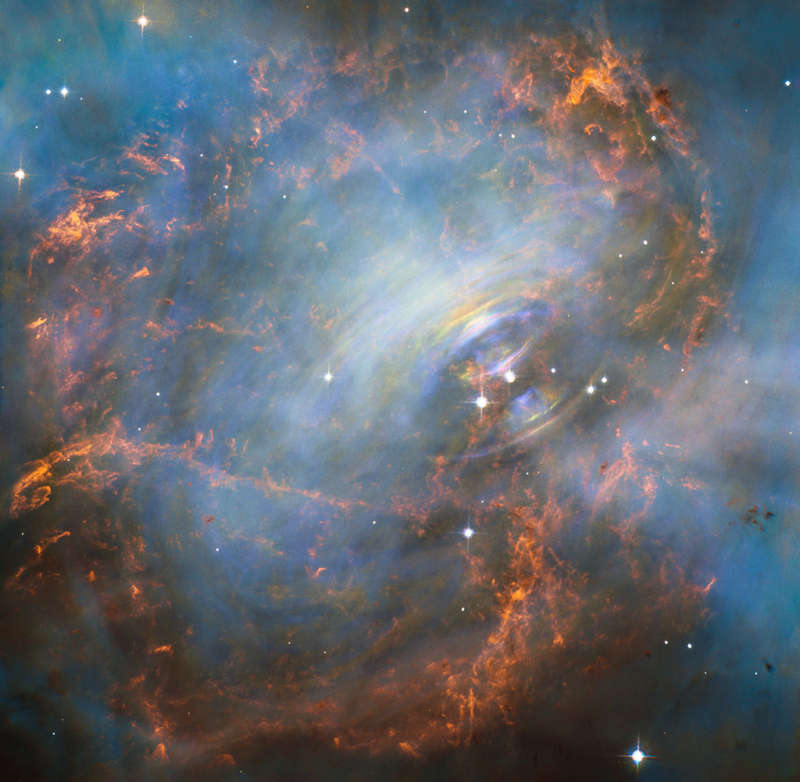
|
Explanation: At the core of the Crab Nebula lies a city-sized, magnetized neutron star spinning 30 times a second. Known as the Crab Pulsar, it's actually the rightmost of two bright stars, just below a central swirl in this stunning Hubble snapshot of the nebula's core. Some three light-years across, the spectacular picture frames the glowing gas, cavities and swirling filaments bathed in an eerie blue light. The blue glow is visible radiation given off by electrons spiraling in a strong magnetic field at nearly the speed of light. Like a cosmic dynamo the pulsar powers the emission from the nebula, driving a shock wave through surrounding material and accelerating the spiraling electrons. With more mass than the Sun and the density of an atomic nucleus, the spinning pulsar is the collapsed core of a massive star that exploded. The Crab Nebula is the expanding remnant of the star's outer layers. The supernova explosion was witnessed on planet Earth in the year 1054.
|
January February March April May June July August September October November December |
| ||||||||||||||||||||||||||||||||||||||||||||||||
NASA Web Site Statements, Warnings, and Disclaimers
NASA Official: Jay Norris. Specific rights apply.
A service of: LHEA at NASA / GSFC
& Michigan Tech. U.
Based on Astronomy Picture
Of the Day
Publications with keywords: Crab Nebula - pulsar - supernova remnant - neutron star
Publications with words: Crab Nebula - pulsar - supernova remnant - neutron star
See also:
- APOD: 2025 October 1 Á NGC 6960: The Witchs Broom Nebula
- APOD: 2025 September 3 Á Cir X1: Jets in the Africa Nebula
- APOD: 2025 August 24 Á The Spinning Pulsar of the Crab Nebula
- APOD: 2025 June 9 Á Between Scylla and Charybdis: A Double Cosmic Discovery
- M1: The Incredible Expanding Crab
- Supernova Remnant Cassiopeia A
- APOD: 2025 January 8 Á Supernova Remnants Big and Small
